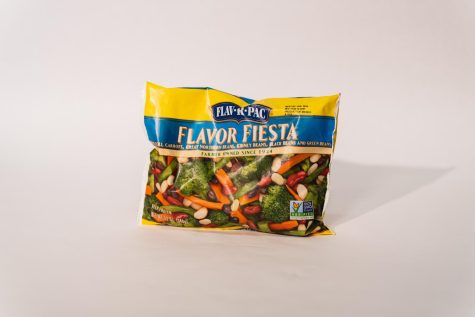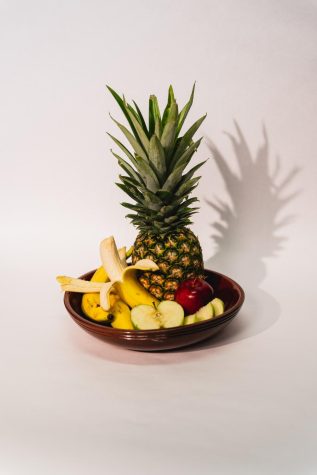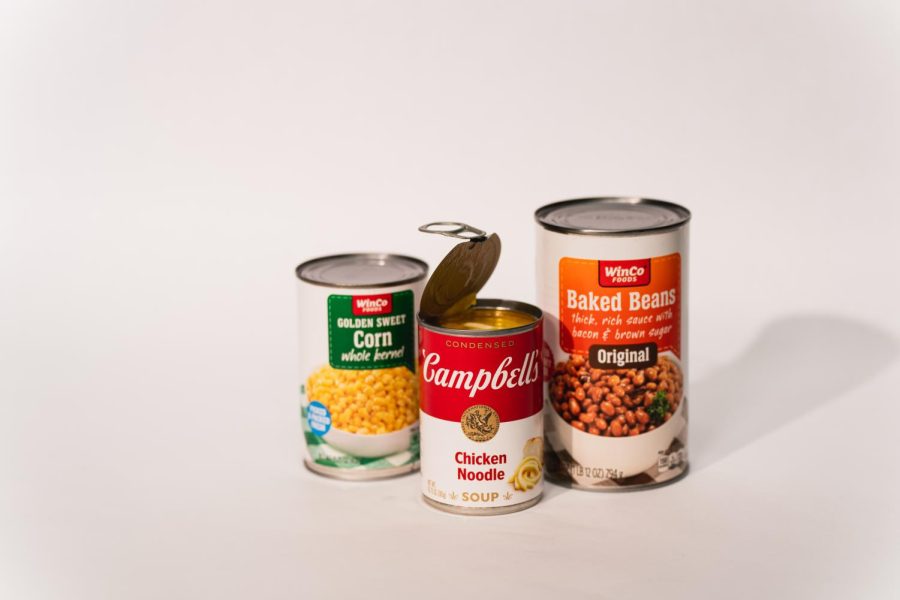Grocery shopping 101
April 25, 2023
Establishing healthy eating habits now while you’re in college can be vital to setting up a successful eating lifestyle in the future.
Even though most of us are on a strict spending budget, there are still ways of eating healthy inexpensively. Some factors that can reduce spending are where you shop for groceries, how you shop and what types of ingredients you buy.
“Thinking about where to shop is one consideration,” Jenny Jackson, clinical assistant professor of nutrition and director of the Oregon State University Dietetic Internship Programs, said . “Depending on your situation, your budget, where you choose to shop and access to transportation. A grocery shopping list is a good place to start, first considering what types of foods you already have on hand. (For example,) if you’re thinking about meal planning, use what you’ve already got, and then buy only what you need to complete the recipe.”
Jackson mentioned that OSU’s Food Hero Program can help students find low-cost, healthy recipes to try. By exploring the website, FoodHero.org, students can see new meal ideas they might want to try and prepare a list of what to pick up next time they’re at the grocery store.

It’s relatively cheaper to get things in bulk as you can make multiple meals with one ingredient, instead of just buying a one-time microwaveable meal. This can also be a healthier option as you’ll know exactly what you’re putting into your meal.
“Packaged foods can be convenient, (but) they’re typically going to be more expensive,” Jackson said. “Buying in bulk and learning how to cook are great strategies for eating well and saving money.”
Some items that can be bought in bulk to make multiple meals are rice, pasta, beans, frozen fruit and vegetables, whole grains, nuts and cereal. There may be more or less options, depending on where you grocery shop.
“When it comes to produce, consider frozen and canned options,” Jackson said. “There’s a perception that fresh is best (and frozen/canned foods aren’t). Frozen produce often has just as much, if not more, nutritional value compared to fresh because it’s flash frozen at the time of maximum nutrition. So don’t underestimate frozen produce, which can be much less expensive. When choosing fresh produce, choose foods in season for the best value and taste.”
Jackson mentions that buying fresh produce is another good choice though, if it’s the season for it and you can afford to make that purchase. She also mentions that shopping on the perimeter, or the outer isles of a grocery store is usually where fresh produce and meat are kept, so it’s convenient to stay in these areas if you’re looking for fresh, nutritious options.
“Before I studied nutrition, I didn’t really look at (food) labels,” Tyng-Yu Chen, an OSU graduate student, said, who is currently studying to get her master’s in nutrition and dietetics. “I didn’t really know what the numbers meant but now I always pick up foods (and look at the label) if they’re more processed. Also, I didn’t know that frozen food and canned fruits and vegetables don’t really affect much of the nutrition. That (fact) made me buy more of those things and it helps me eat more vegetables. It (also) doesn’t go bad that quickly, especially when I’m only cooking for myself.”
WinCo is a good choice for students to grocery shop as it has a relatively large bulk section and has other benefits as well, such as being one of the least expensive grocery stores in Corvallis.
“WinCo is nice, because it’s also really located effectively on the bus lines (and has) very frequent bus stops at both sides of the WinCo,” Emily Faltesek, OSU’s food security programs coordinator, said. “(WinCo’s location can make) people feel like, ‘oh, that’s far away from campus, that would be far to walk’, but it is really well connected to the bus line.”
Faltesek is a registered dietitian who leads the Basic Needs Center located on campus. The center is another way students can enquire information about their nutrition and to strategize ways to meet their a student’s specific eating needs or requirements
The BNC is open throughout the week for students to drop in and talk to peer navigators, who can address a student’s specific questions, such as a good place to get gluten-free foods and which grocery store takes credit cards.
The BNC also gives out free food to students and other people in the Corvallis community. Each Wednesday, from 8:30 a.m. to 2:30 p.m., students can stop by the center and look through the pantry to get staple ingredients. These times may change each term, so it’s good to double-check on their website before visiting this term.

“I noticed that OSU students want to eat fresh produce and we try to just be a meaningful contribution to the food source of OSU and students who choose to come,” Faltesek said. “We don’t really look at overall trends or try to necessarily promote a particular pattern of eating, but we try to have a quality offering for the different types of items that we choose to carry.”
“A lot of my rice is from here,” Sophia Torrez, a fifth-year industrial engineering student, said, who also works as a BNC peer navigator. “My ramen and peanut butter are from here. A lot of the stuff that we have here is also at WinCo. Literally my peanut butter would be from WinCo (but here,) for free.”
The pantry carries foods such as 100% whole wheat sliced bread, flour, potatoes, lamb, fish, chicken, eggs, yogurt, multiple kinds of rice and plenty of fresh produce, which seems to be a hot commodity for OSU students who visit the pantry. Faltesek mentioned that the center tries to carry as much diverse, cultural foods as possible to cater towards students with all backgrounds.
She also suggested that students attend cultural night events, not only for the experience, but they can also try free, new foods they may want to incorporate into their palate. Faltesek said being a college student is a great time to experiment with different foods as most of us don’t rely on our parents to stock the fridge anymore.
“I feel like developing healthy patterns can really set you up for success,” Faltesek said. “Being at college is a time when you really have a lot of opportunity for experimentation. Your time might be constrained (and) your resources might be constrained, but if you’re making these decisions for yourself about what you eat, it can be a really important time.”
With this new independence, students can learn new skills when it comes to cooking and their eating habits. They can then take these learned practices into their future endeavors.
“We know that food, nutrition, physical activity and mental health are pillars of an overall healthy life,” Jackson said. “Prioritizing your health supports you to perform well in your classes, which sets you up to graduate and have a successful career. Forming healthy habits will also benefit your relationships, including your family, now and in the future.
Jackson mentioned that food choices can be hard as not everyone has equal access to food. We need to continue working to ensure all students have access to enough food to support an active, healthy life. Especially since students are time constrained with studies and other priorities, so it may be hard to always put healthy eating as a responsibility.
“At least when I was a college student I wasn’t necessarily thinking about beyond myself,” she said.
However, there are methods to eating healthy on a low-budget, and hopefully they’re as stress-free as possible. Applying for SNAP benefits, going to the co-op on Student Discount Tuesdays, sharing food and the cost with roommates or friends, and using coupons are ways to lower the cost when it comes to grocery shopping.






